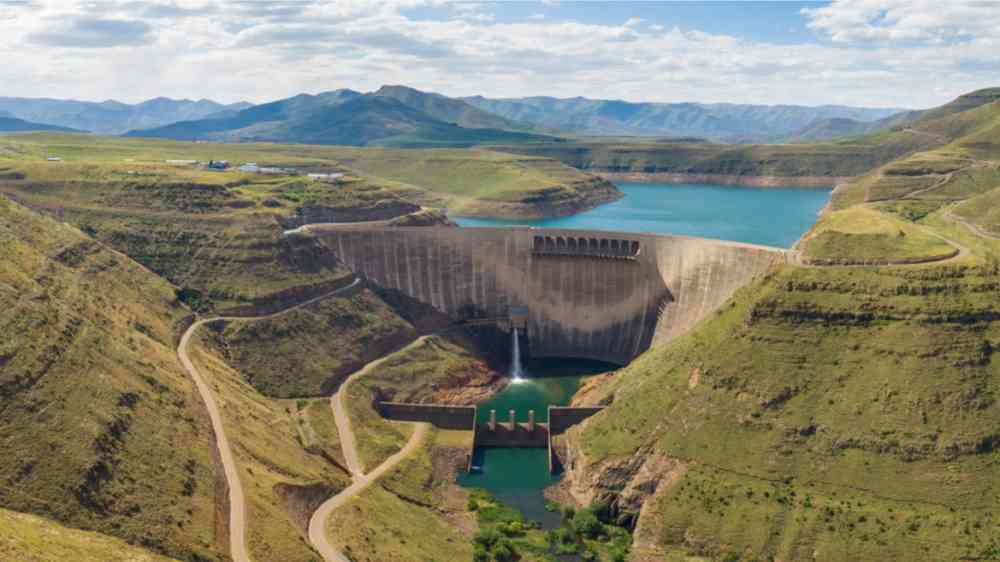Dams at increasing danger of collapse due to climate change and conflict

At the end of August, Arbaat dam in Sudan collapsed, causing catastrophic flooding in downstream communities with over 60 people reported dead, and 20 villages destroyed. The full scale of the impact is likely larger. Just this week, 37 people were reported dead and thousands displaced after the Alua dam in northeastern Nigeria burst. These collapses are not unique: Earlier this year, a dam collapsed in Kenya, and this week marks the first anniversary of the collapse of two dams upstream of the coastal town of Derna in Libya, devastating the town and causing an estimated 6,000 to 20,000 casualties.
With the frequency and severity of extreme weather events increasing due to climate change, many of the 70,000+ dams in the world are at a higher risk of failure. Additionally, the majority of the world's dams are now aging. In conflict zones, where maintenance may be absent, or where as in the case of Jebel Aulia dam in Sudan, operators have abandoned dams due to these being in rebel-held territory, there is an increased risk of further collapses, with catastrophic impacts.
Dams have been built to regulate rivers for centuries, and despite the many negative consequences, dams and the reservoirs they create have a critical role in managing water resources, supporting water supply to towns and cities, irrigated agriculture, energy generation, and several other purposes. Dams can also be very effective in reducing floods when well operated. Recent research shows that the world's dams can reduce the number of people exposed to projected increases of global flood risk due to climate change by 13-21%.
Outdated hydrological and climate data
The cause of the collapse of the Arbaat dam was excessive rainfall due to the current heavy monsoon season in the Sahelian region including Sudan, with the capacity of the spillway likely being exceeded and subsequent overtopping and failure of the dam. The dams upstream of Derna also collapsed as a result of extreme rainfall, due to Storm Daniel, a Mediterranean cyclone. Dams are built to withstand extreme floods, with spillways and emergency outlet structures designed to pass these safely. Still, there is always a small probability of floods larger than those the dam builders designed for. This could lead to the dam being overtopped, and subsequent dam burst.
The changing climate poses a significant risk through increasing the probability of failure. Some 65% of the dams included in the 2017 GRAND v1.3 database of world dams are over 50 years of age. For the vast majority of dams, it is not clear what climate and hydrological data was used to design the dam and its spillways. This is particularly a concern in areas where such data is scarce, as for example on the African continent. Additionally, the climate has already changed significantly since the majority of dams were built, and in many parts of the world extreme floods are projected to further increase in frequency and severity. In many cases, dam spillways will not be able to cope, leading to an increased likelihood of failure and risk of catastrophic flooding. Adaptation of dams, through increasing the capacity of spillways, or even decommissioning is hugely expensive and slow.
Conflict and instability
The situation is worse in marginalised regions and conflict areas. Intentional breaching, such as the sabotage of the Kakhovka dam in Ukraine by Russian forces poses a very clear risk. However, other risks related to conflict and instability may be less apparent. During the occupation of Northern Iraq by ISIS, necessary maintenance of Mosul dam was discontinued, leading to concerns that Iraq's largest dam might collapse. The situation in war-torn Sudan is particularly dire. There the country's dams are divided, with some in rebel-held territory, including the Jebel Aulia dam just upstream of the capital city of Khartoum. This dam is now abandoned and its gates are essentially not operated. Coordination of flood operations of other major dams is increasingly difficult due to displacement of staff and communication challenges. Coordinated operation of these dams is essential, particularly given the ongoing heavy monsoon season, which already led to the collapse of the Arbaat dam.
Failure of any of these major dams would have catastrophic consequences, adding to an already extremely difficult humanitarian situation in the country. Whether any of these dams is at an immediate risk of failure is unclear, but the additional risk is a grave concern.
The impacts of a dam collapsing are catastrophic. Arbaat and Derna were both small dams. Seventy-three percent of the world's dams are larger. The increasing risk of failure due to climate change calls for increased attention and investment. Particularly where that risk is aggravated further by conflict and instability, more effort is needed. The collapse of a dam and the suffering this causes can be averted, but appropriate action needs to be taken.
